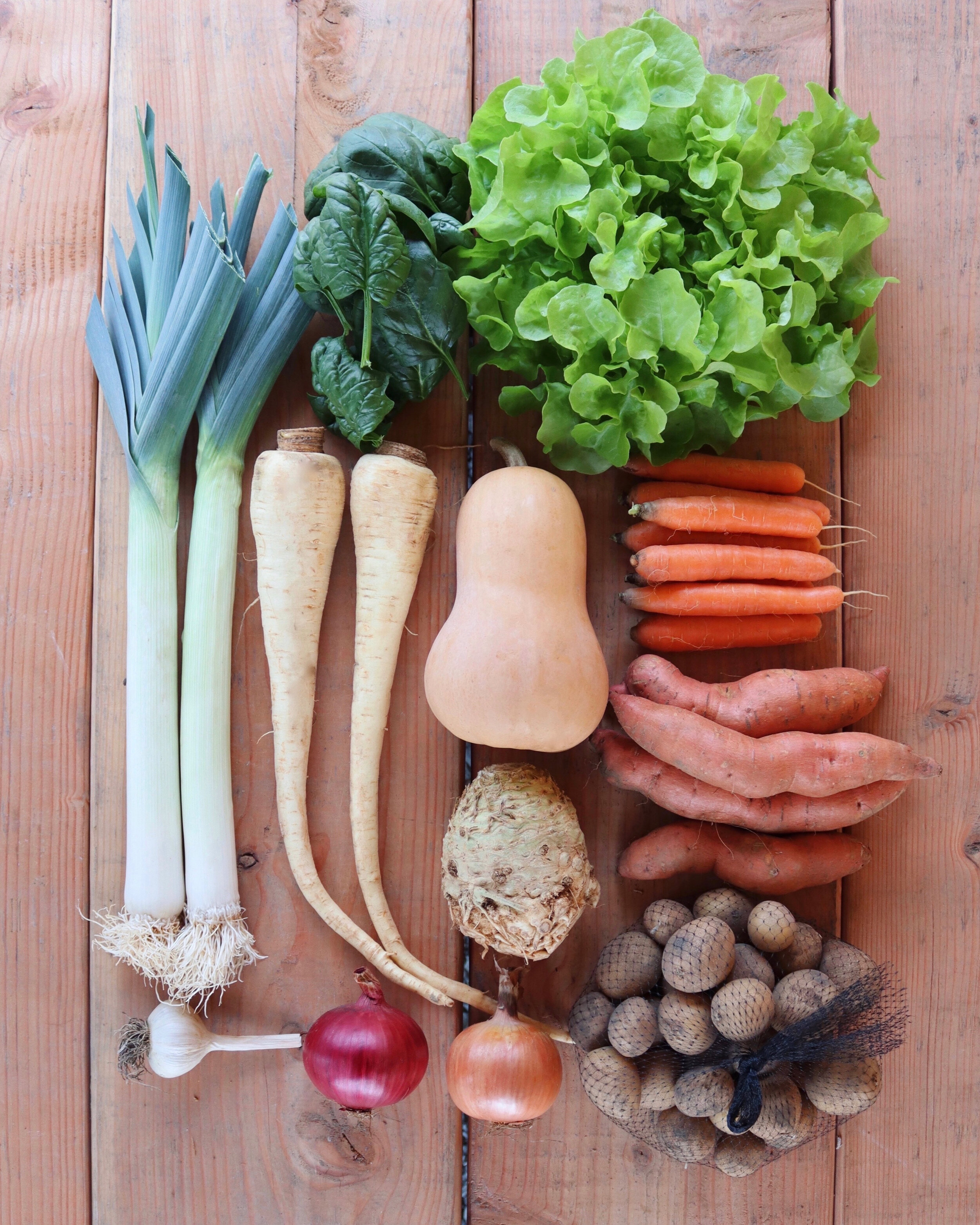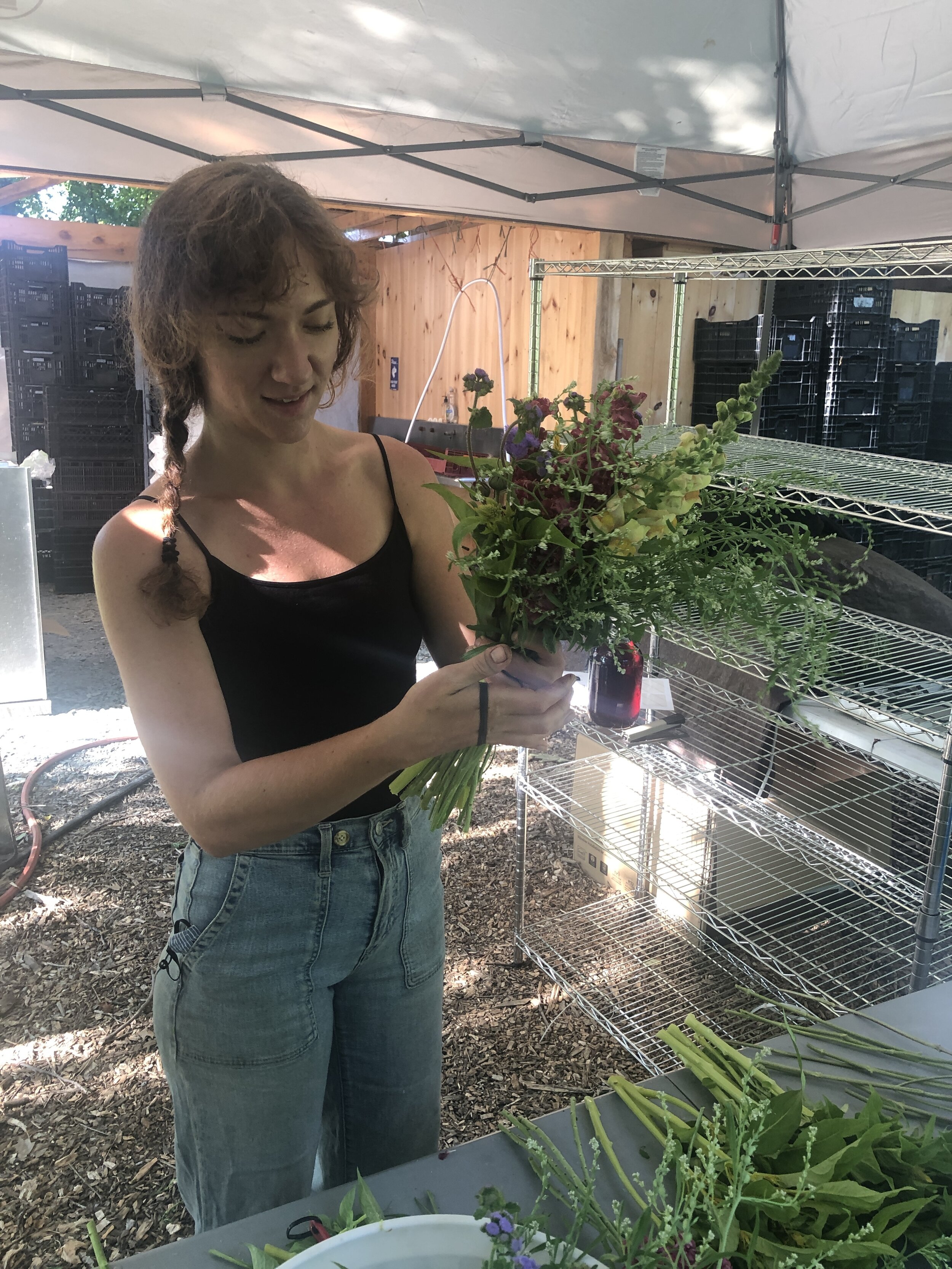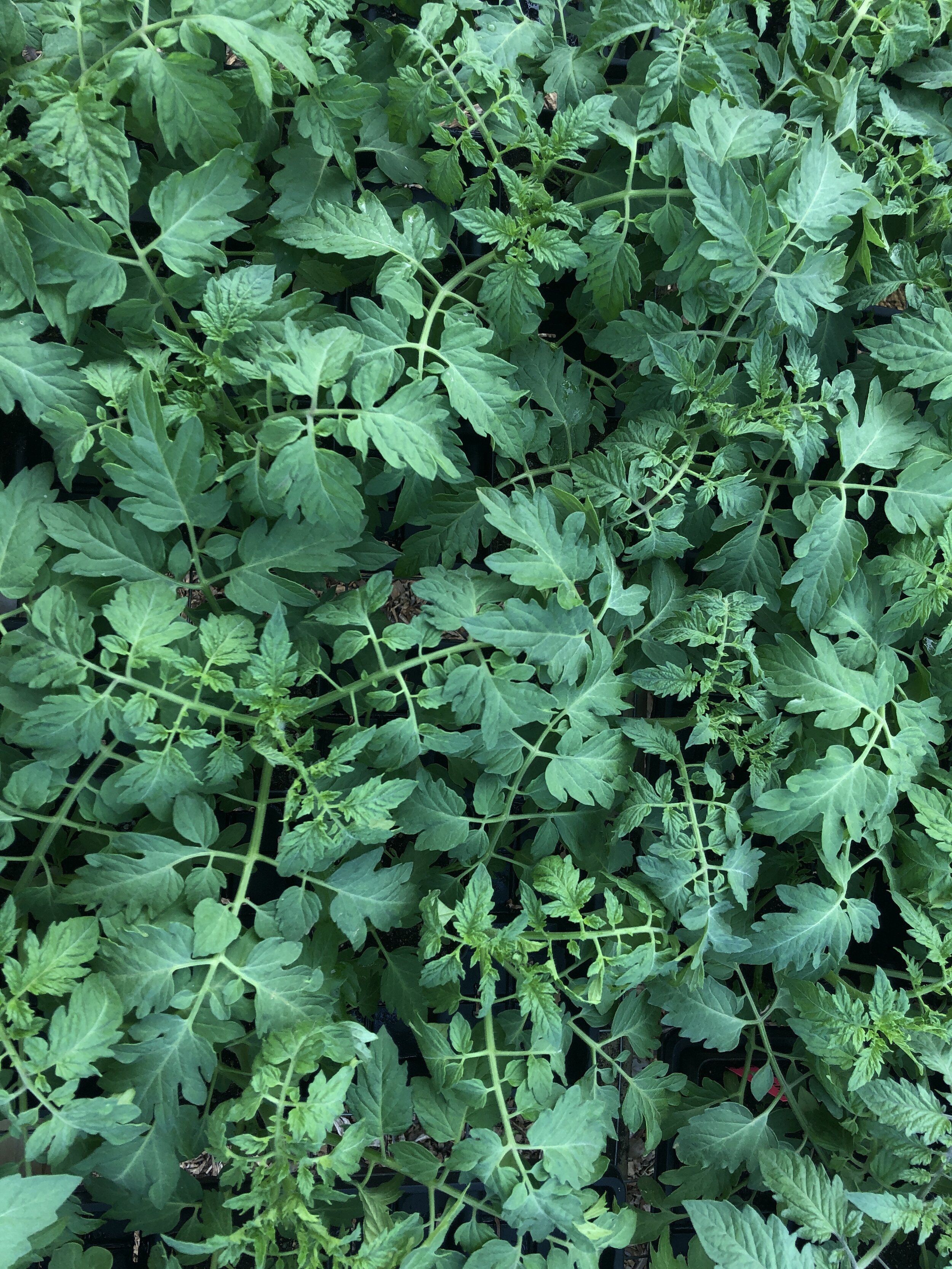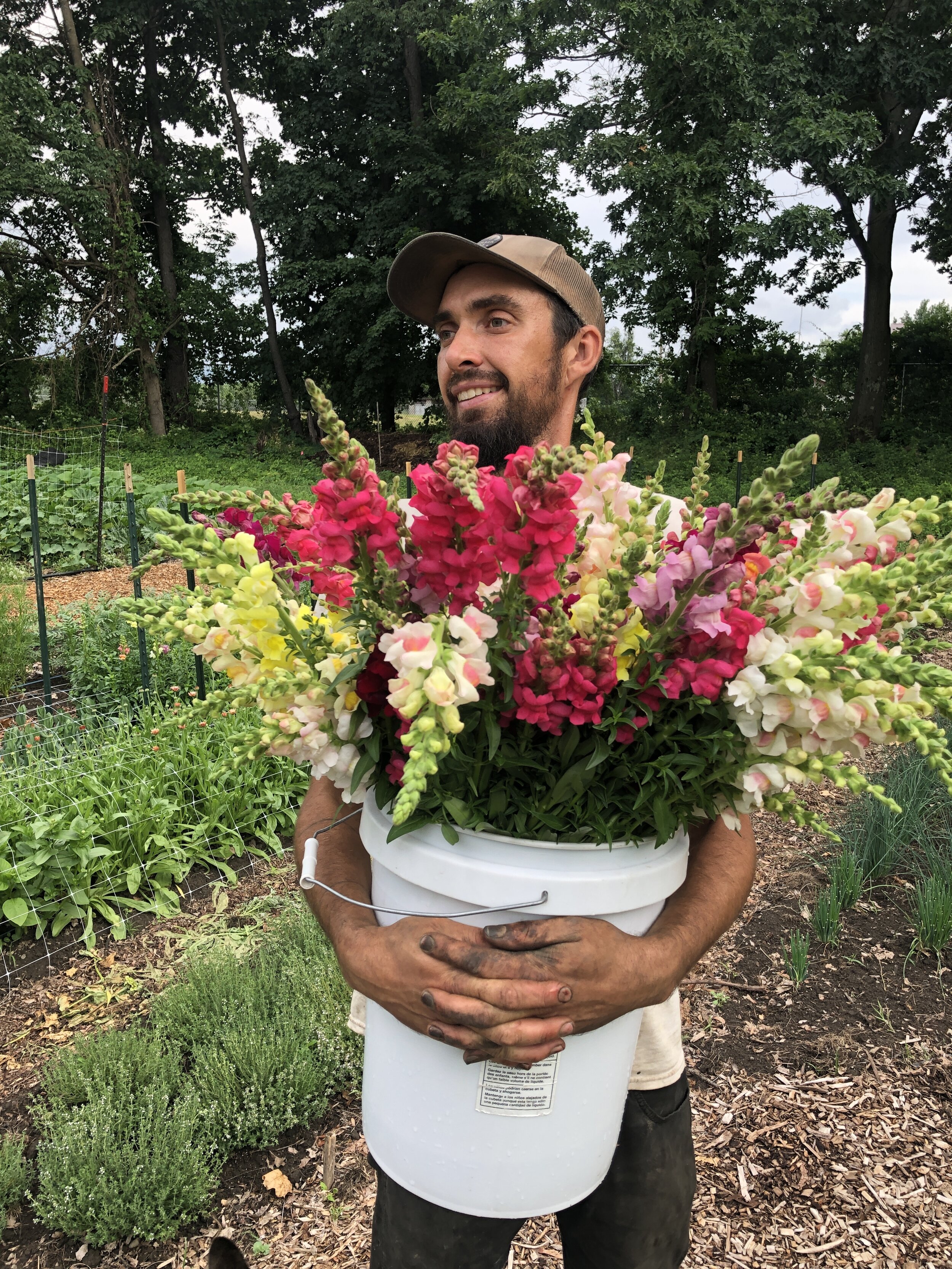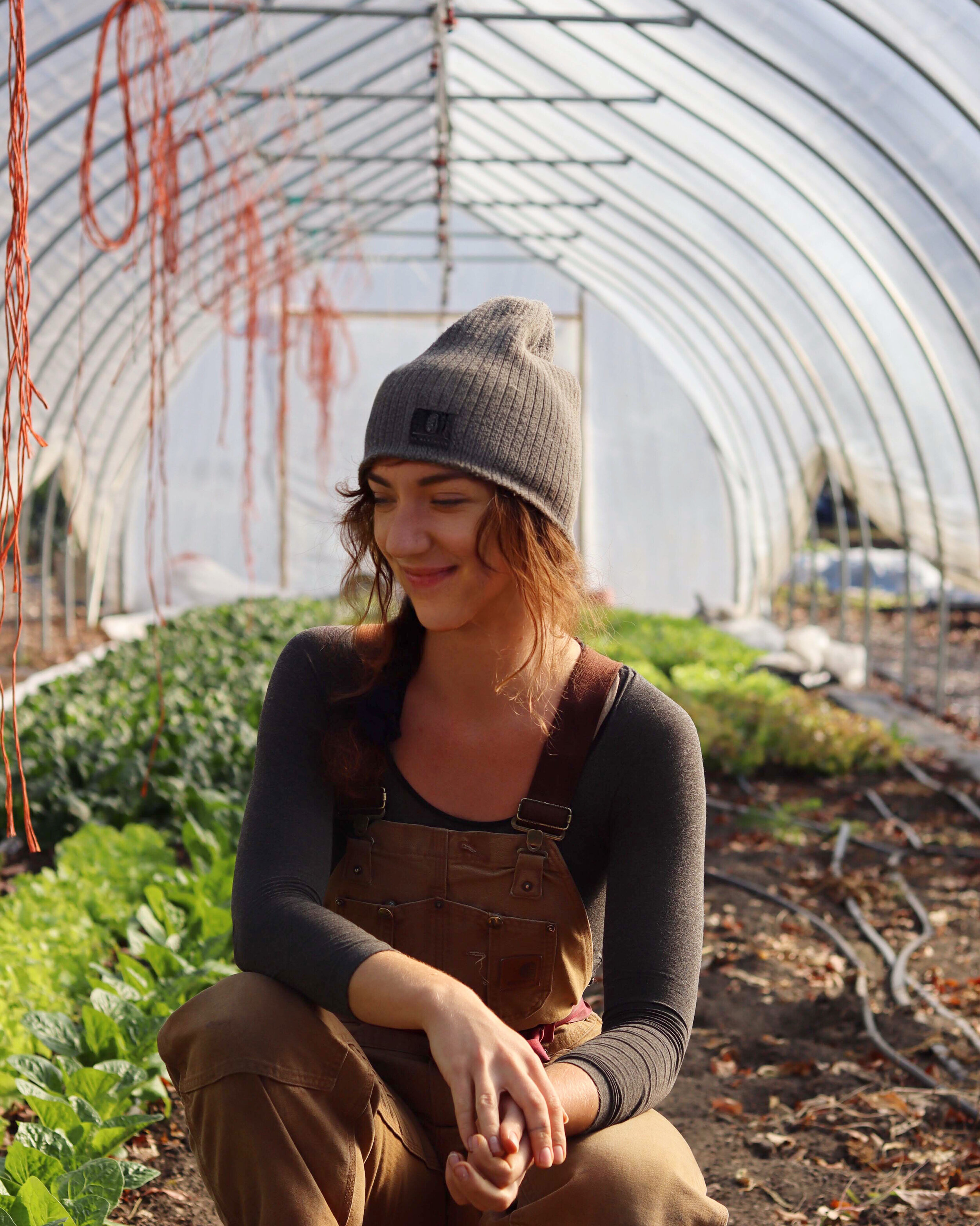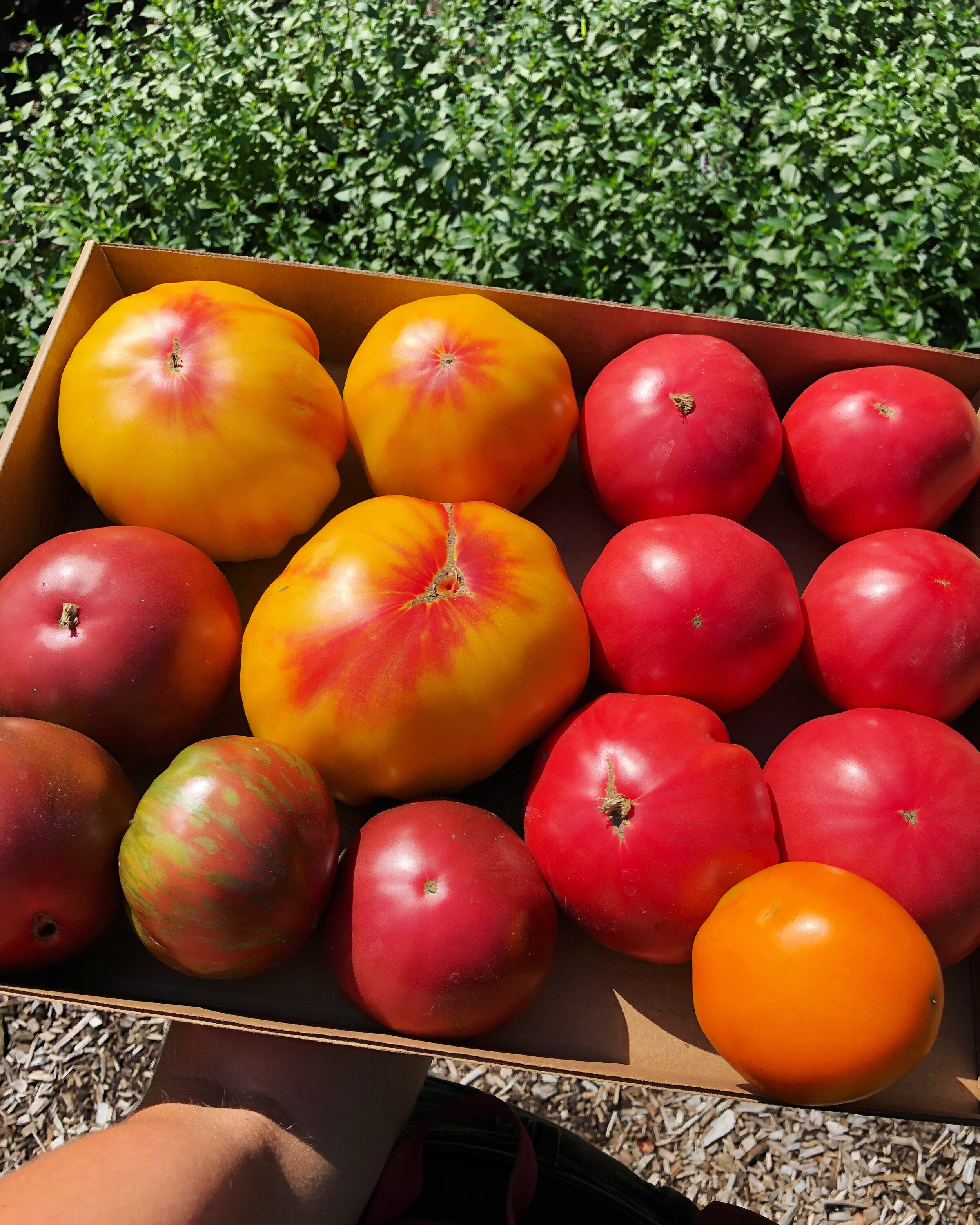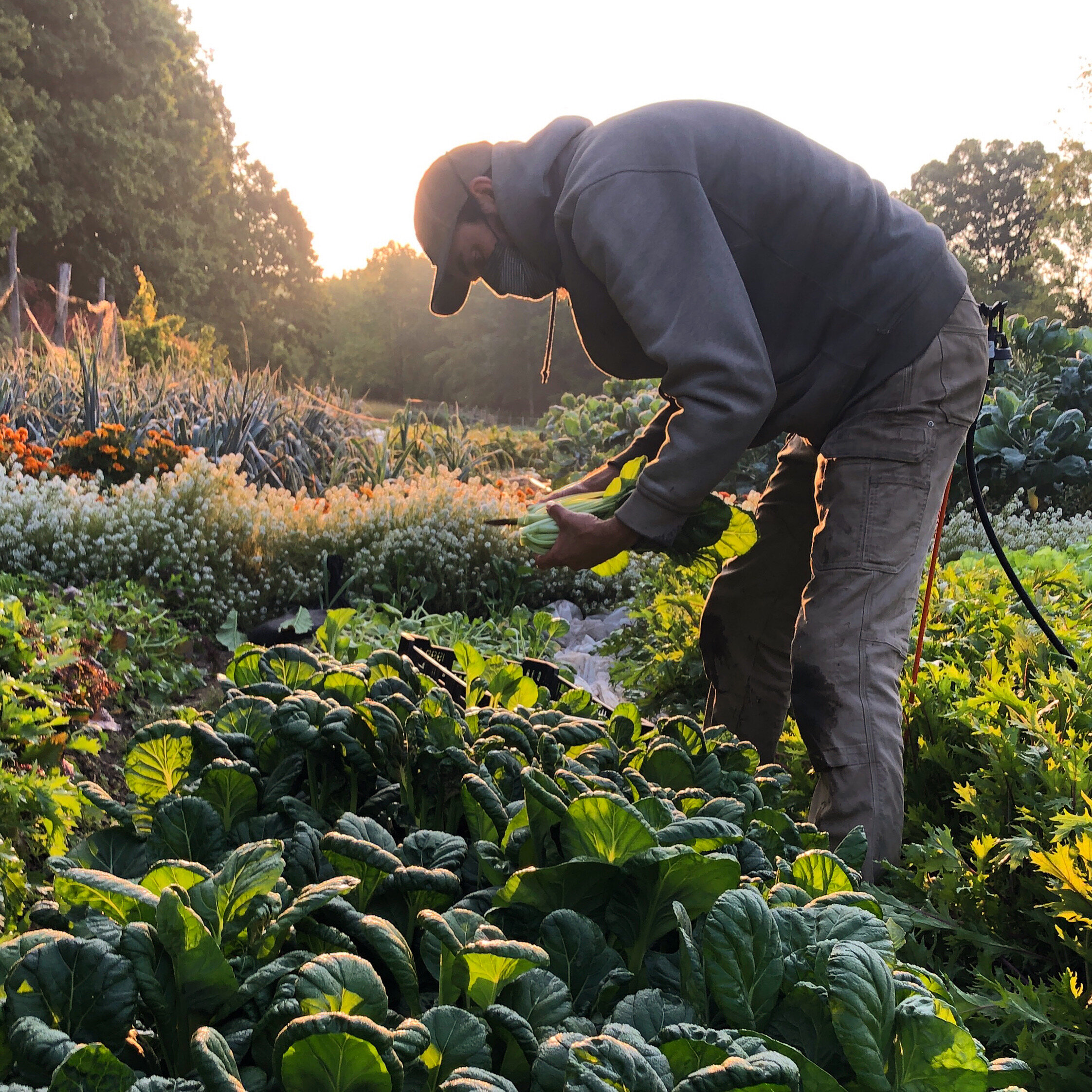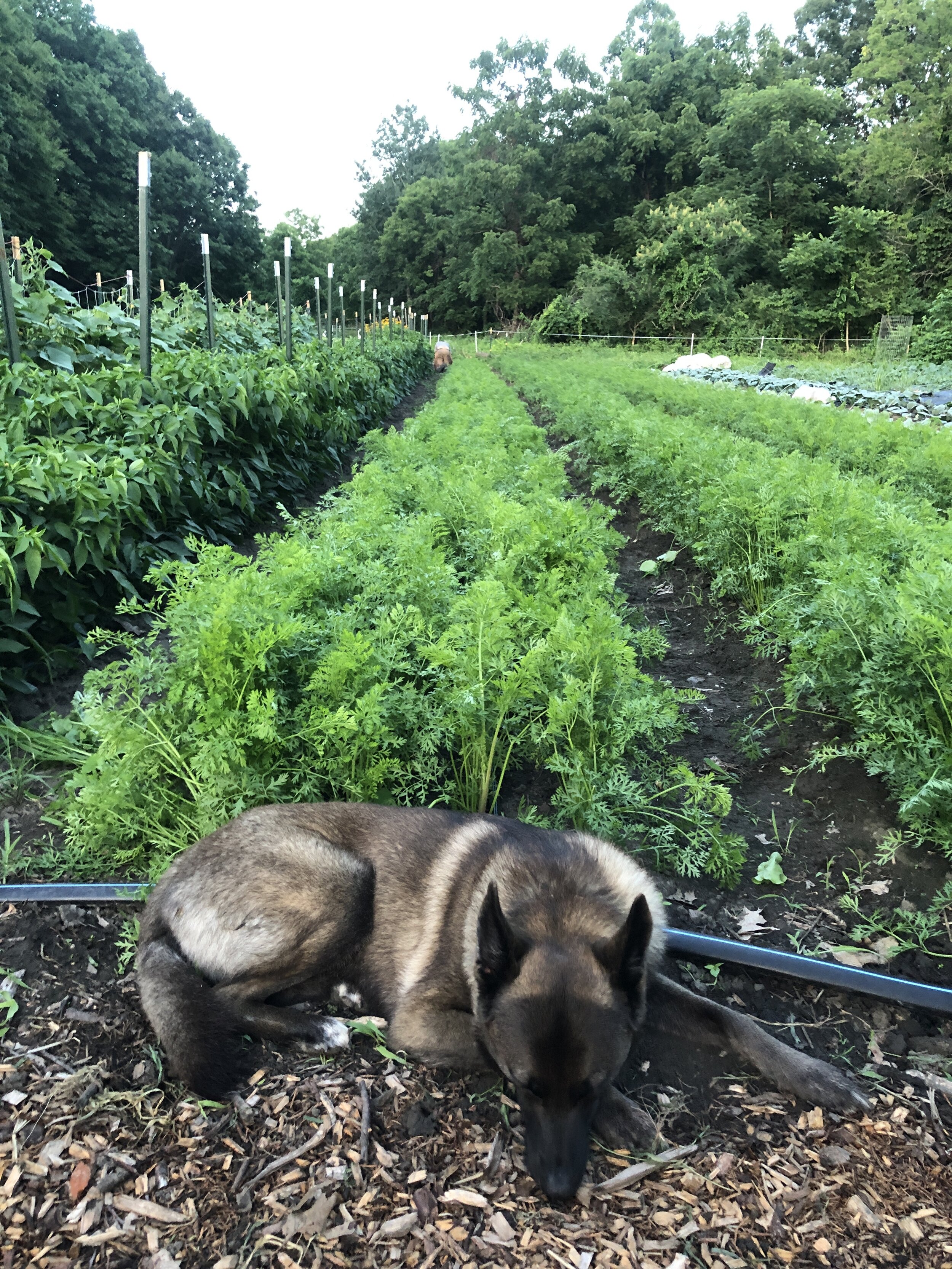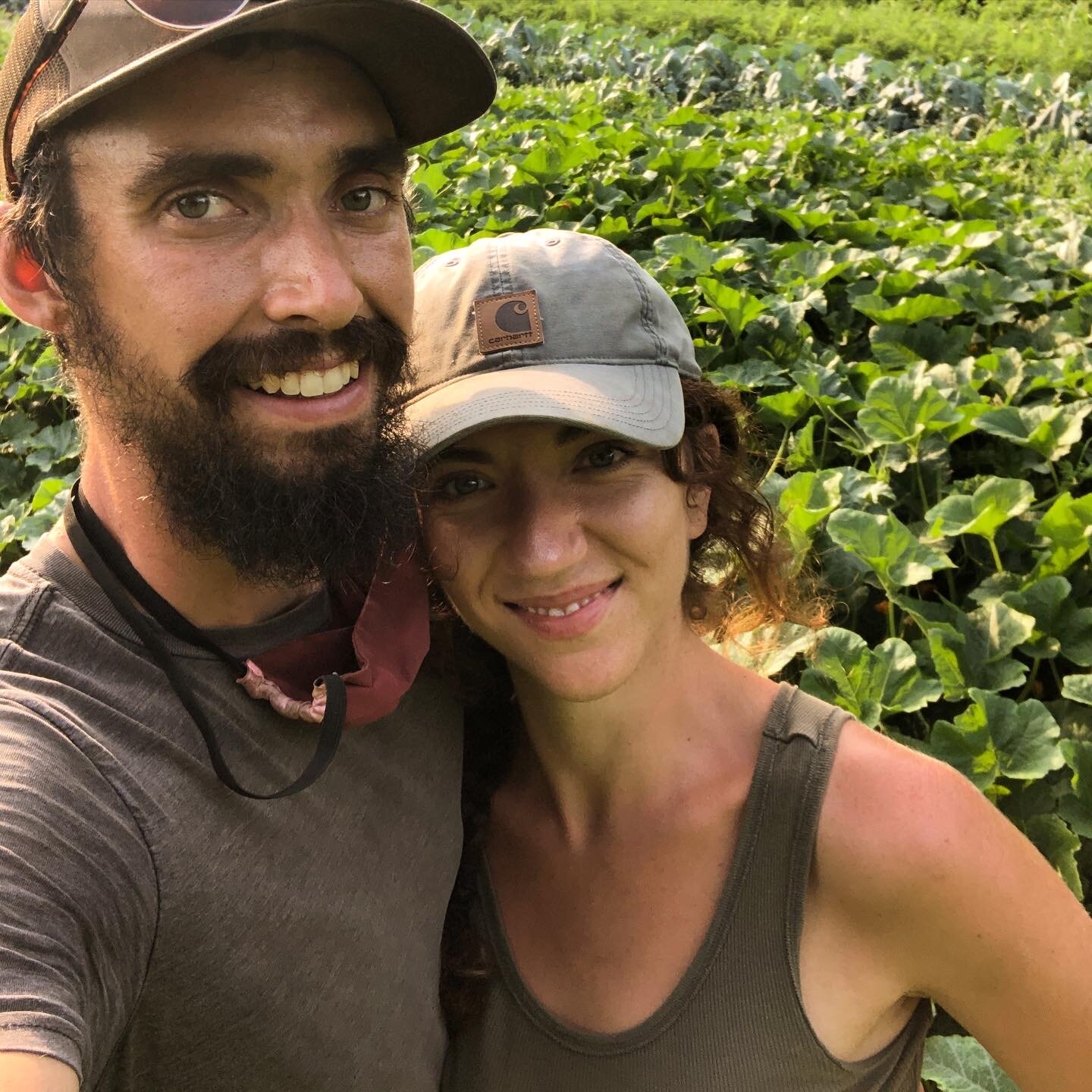The Producers: Edible Uprising Farm
This is the second installment of “The Producers” a series that works to show the faces behind the folks growing the food on our plates and stewarding agricultural lands. Read the first installment of the series with Integral Farm in Oregon, here.
Alicia Brown and Ben Stein may only farm on one acre, but Edible Uprising Farm impacts their community in upstate New York in a major way. With the sounds of Troy, NY literally just down the road, Alicia and Ben are producing food organically, caretaking the land and providing for their community along the way.
At the start of the pandemic the demand for local food soared, creating an exciting but stressful situation for small farmers like Alicia and Ben. This past year has been full of transitions and adaptations to meet the growing demand and new procedures required due to COVID. Ben and Alicia believe “everyone has the right to see where their food is grown,” and even though most people who eat their food live within 3 miles of the farm (people bike and walk directly to the farm!), they started doing deliveries and drop-offs to make sure everyone had access to their food safely. After a successful year of adaptations, they are spending the winter planning for the next year, plans which include hiring more help and expanding their customer-base to continue to meet the growing demand.
Alicia could also be a standalone feature on our Faces of Food series, as Edible Uprising has amassed a pretty significant social media following where they engage with CSA members, other farmers, and folks interested in their farming practices and lifestyle (like us!). Alicia says she loves to feel inspired by others in the food system through social media, and it has become one of the best ways to connect with those in the community eating their produce. During a year when connection has been harder than ever, seeing the fruits of their labor in a recipe on Instagram is even more special.
Read more about how the team at Edible Uprising Farm has made land stewardship and sustainability their passion, with delicious fruits and vegetables as their product.
GG: Tell us a bit about your farm: Where are you located? What do you sell? Where do you sell? How long have you been farming?
A: Our farm is located in Troy, NY, a small historic city set on the Hudson River. We grow on exactly one acre, and it’s just the two of us that run the farm. We grow food primarily for our CSA (Community Supported Agriculture) which is a program where people can buy a share of the harvest from the farm at the beginning of the season and in return they get a box of in-season vegetables from the farm each week of the growing season. This year, in addition to our CSA, we launched a Virtual Farmstand, where we put up everything we have available on the farm, and people can get veggies picked fresh to order from the field. Since we’re picking only what has been ordered, there is zero food waste on our farm. We also sell to local chefs, even despite the difficult year it has been for the restaurant industry.
GG: And how did you guys get into farming?
A: We have both always had a love for food, and the more we cooked, the more we wanted to understand the sources of what we were eating. Ben studied sustainable agriculture and food systems in school, and following graduation, Ben continued working on many farms in Vermont and Colorado. I ran a homestead on an 80 acre property where we grew all of our own food. Ben and I always knew that the end goal was starting a farm together—we desperately wanted to work together everyday and we truly wanted to feed other people with what we grew, which led to eventually finding the land we currently lease to start our farm.
GG: What does sustainable farming look like to you and on your farm?
A: I think it’s first important to address what unsustainable agriculture is, which comprises most of the agricultural world as we know it today. Industrial agriculture was brought about to try to feed more people with less labor input and higher yields, making it easier for less people, using industrial methods, to grow huge amounts of food. This approach employs short term thinking, is market driven and is leading us down a very dangerous road. Through our current farming model, we have found ourselves in a crisis as our topsoil is disappearing, greenhouse gas emissions from agriculture is the leading cause of the climate crisis, and we are getting sicker as our food system prioritizes cheap, low cost food. We also see a concentration of wealth and land access into fewer hands—and large international corporations control and own the patents to the vast majority of our seeds. Meanwhile land is being taken away from Indigenous communities and access to good farmland is out of reach for many people who want to farm. This road has led us to a very dark reality, and the only solution is to flip this thinking on its head and to view ourselves and the land we are working with very differently. In the words of Jean-Martin Fortier: We need to replace mass agriculture with agriculture in the mass.
Try to imagine that you’re walking through a forest, what do you see? Above you are the canopies of many different kinds of trees, shading the ground you stand on. Below you is a ground that is littered with a thick mulch of leaves and decaying branches, creating a thick cover over the soil. The soil beneath you feels soft and bouncy, and is dark, rich, wet and full of worms and other organisms. You see a small herd of deer moving through the trees, munching and leaving droppings behind, further feeding the soil below. These are systems that fall into place without interference—a system that is balanced and allows for the plants, soil, insects and animals to prosper. These are the systems we are trying to recreate on our farm. We mulch the ground with leaves, straw and wood chips to protect the soil. We plant our crops close together so the shade from their leaves cast shadows on the ground below, protecting the soil and preventing the growth of invasive weeds. We don’t disturb our soil, so the trillions of organisms under the surface can thrive. We plant many different varieties of crops together, to create diversity in the root systems below the soil. We spread compost to add nutrients to the soil. If you think about a conventional farm, with thousands of acres of only one crop, and the soil exposed to the elements, you can imagine why this is so counterintuitive.
Where in nature do you ever see exposed earth? The answer: only in the desert, where almost nothing can grow. Then why do all of our farms look like deserts and not lush, dynamic forests where plant life flourishes? When we think about what sustainable farming is, we see the role of the farmer as interacting within natural systems that are already in place. Our role is to create space and conditions for the soil, plants, insects and animals to thrive and work together to find balance. Often the role of farming is to take a step back, observe rhythms and let things balance out on their own. We practice disturbing our soil as little as possible, otherwise referred to as “no till” in the farming world. By not disturbing our soil through tilling, we are allowing the trillions of organisms in the soil to prosper, and in turn, offer our plants a rich and alive place to take root. I also think sustainability comes into play on a human level in farming as well. How do we as humans, as part of nature interact with the land? How do we as humans sustain our bodies through such labor intensive work? How do we return farming to a place that is driven by community involvement as it was for most of human history? Sustainable farming has a huge amount of complexity, but is also driven intensely by intuition and patience.
GG: What kinds of things do you consider when making decisions on the farm?
A: As farmers who are driven by a deep desire to care for the land we work, we are always thinking 100 years in the future, and making these decisions the priority above any decision that will yield in the near future. We see firsthand that thinking long term is always the right answer. More basically, the health of our soil is our number one consideration when making decisions on the farm. So much of our labor is to make sure our soil is protected and cared for, and the health of our soil translates into the health of our plants.
GG: Do you view your farm as part of a larger system?
A: Absolutely. It’s especially interesting to farm in an urban area, because the farm is not only part of a larger ecosystem but also a larger social system. Every decision we make needs to take the community around us into consideration because we are located in an urban area. What do the people around us need from the farm? How do our decisions impact the community around us? We also have many ecological considerations—When we first came to the land, there were no bees here to pollinate our early crops, because there was no habitat for them to feed on previously. After planting flowers in each block of the farm, we slowly saw the return of the pollinators, and now, almost two years after starting the farm, there are more types of bees, wasps and flies than we have ever seen before. We created the habitat and it invited in the insects we needed to pollinate all of our crops.
GG: Do you think sustainable food is accessible for everyone in today's world?
A: Absolutely not, but we’ve seen that through mutual aid, farmland trusts, farming incubators and other initiatives, that providing access to everyone is possible, and it can be done with dignity and respect.
GG: What does the ideal food system look like for you? Are there issues that you think are currently being overlooked?
A: We are living in a world where you no longer go to the butcher to buy your meat, the farm stand to get your vegetables and the baker to get your bread. Instead, we can go into one store and get everything we need—products that have been industrially farmed and shipped across the world to be available at all times. We see the move of companies like Amazon and Walmart getting into groceries and food delivery to be another scary step away from a sustainable and inclusive food system. We hope to see more and more small farms like ours, that prioritize quality over quantity. This isn’t possible without land access being prioritized and offered to people who want to farm, especially BIPOC farmers that have historically been dispossessed of their farmland. Examples like the Intervale Farm Hub in Burlington VT is a way that starting a farm has been made much more accessible to aspiring farmers, and we see initiatives like this to be a wonderful example of how we can nurture new farmers to create a new more equitable food system.
GG: Thank you so much for your time talking to us. Finally, we’re wondering — What is a favorite recipe that you are loving lately?
A: Our favorite recipe right now is a salad that has radicchio, spinach, roasted sweet potatoes, apple and pecans. Tossed in a maple shallot vinaigrette.
Ingredients:
1 head radicchio
1/3 lb. spinach
1 lb. sweet potatoes
big handful of pecans or cashews
optional: pomegranate seeds or green apple
Dressing:
1 shallot
1/3 cup olive oil
2 tbsp balsamic vinegar
1 tsp maple syrup
1/2 tsp course salt
lots of freshly ground black pepper
Method:
Chop radicchio and spinach into ½ inch strips. Cut sweet potatoes into 1/2 inch cubes, coat in oil, salt and roast at 400 degrees for 15 minutes or until nicely tender inside and crispy on the bottom. For the dressing, finely mince the shallot, and combine with oil, balsamic, maple, salt and pepper. Let marinate together while potatoes roast. Combine greens, nuts, sweet potatoes and dressing while potatoes are still warm. Let flavors meld for five minutes before serving.
Alicia Brown and Ben Stein are the farmers and owners of Edible Uprising Farm in Troy, NY. We are so grateful for the time they spent on this interview and their care for the land! We are thrilled to share their voice in this space.


